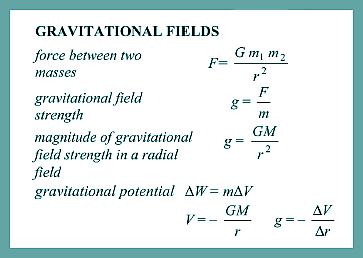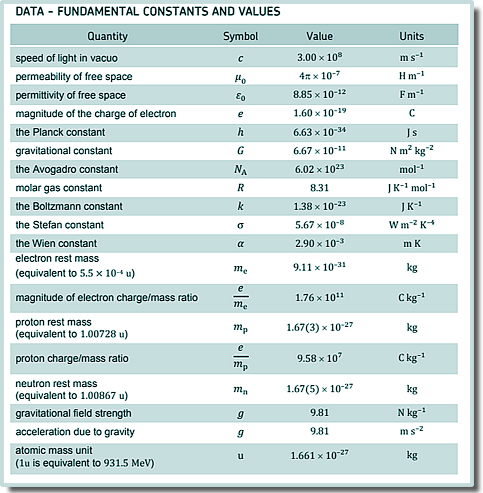Gravitational fields - Multiple Choice Q21. Which one of the following statements about Newton's law of gravitation is correct? Newton's law of gravitation explains:
Q22. If an electron and proton are separated by a distance of 5 × 10–11m, what is the approximate gravitational force of attraction between them?
Q23.A spherical planet of uniform density ρ has radius R. Which line, A to D, in the table gives correct expressions for the mass of the planet and the gravitational field strength at its surface?
Q24. Charon is a moon of Pluto that has a mass equal to that of Pluto.
The distance between the centre of Pluto and the centre of Charon is d. X is the point at which the resultant gravitational field due to Pluto and Charon is zero. What is the distance of X from the centre of Pluto?
g = GM/r2
Pluto's gravitational field = Charon's gravitational field GM/X2 = GM/9(d-X)2
X2 = 9(d - X)2
X = 3(d - X) X = 3d - 3X So 4X = 3d X = ¾d Choice C
Q25. The distance between the Sun and Mars varies from 2.1 × 1011 m to 2.5 × 1011 m. When Mars is closest to the Sun, the force of gravitational attraction between them is F. What is the force of gravitational attraction between them when they are furthest apart?
F ∝1/r2 F1r12 = F2r22 F(2.1 × 1011)2 = F2(2.5 × 1011)2 F2 = F x (2.1 × 1011)2/(2.5 × 1011)2 F2 = F x 2.12/2.52 F2 = 0.71F Choice A
Q26. A satellite X of mass m is in a concentric circular orbit of radius R about a planet of mass M.
What is the kinetic energy of X?
F = mv2/r
v = √(FR/m)
F = GMm/R2 ∴ the velocity of the satellite is given by v = √[(GmM/R2) x (R/m)] v = √(GM/R)
EK = ½m(GM/R) EK = GMm/2R Choice A
|
Follow me...
|









